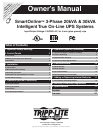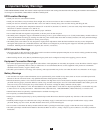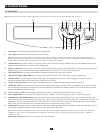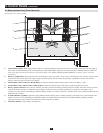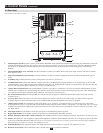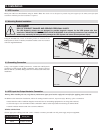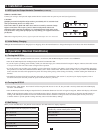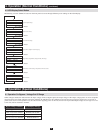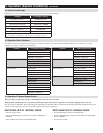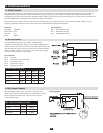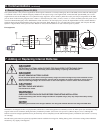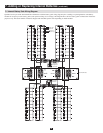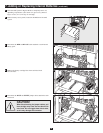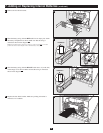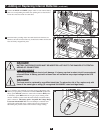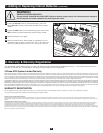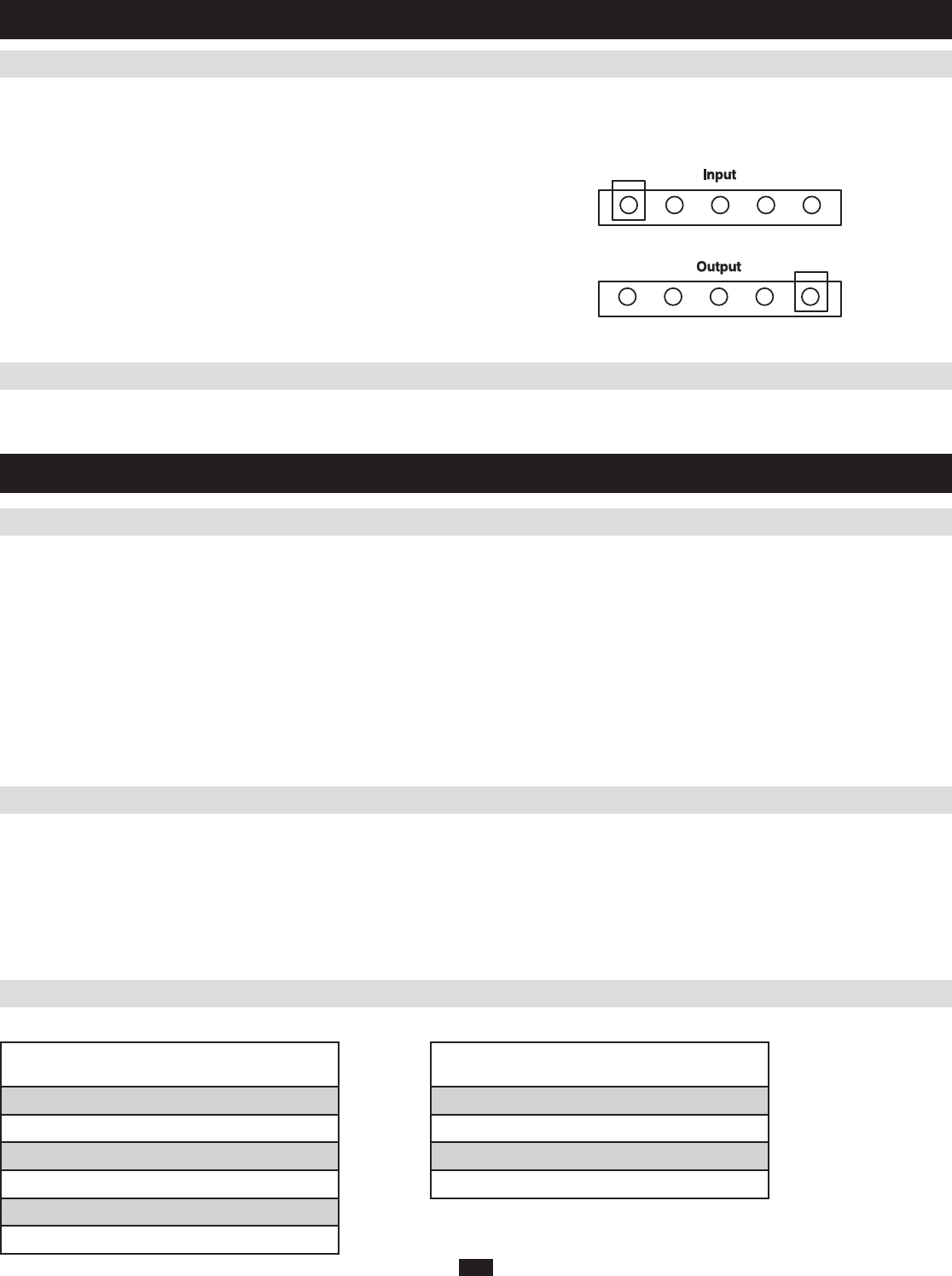
7
WIRING CONNECTION
ConnectyourwiringtotheinputandoutputterminalblockslocatedontherearpanelofyourUPS(seefigurebelow).
CAUTION!
Qualified personnel should follow all procedures prescribed by N.E.C. and other local
codes for hardwiring devices to a utility source.
Ensure that cables are fitted with cable sleeves and are secured by connector clamps.
Tighten connections with a torque of not less than 35 inch-pounds. Observe the
appropriate cable connection regulations [e.g. National Electrical Code (NEC) in the
U.S.] at all times. Using cables of improper size may damage your equipment and cause
fire hazards.
Note: When shipped from the factory, bypass input and main input wires are connected.
• Pressthefront“OFF”button.Yourloadwillstillbeenergized.Theinverterisnowoff,butyourUPSisnotfullydeactivated.TheLCDDisplay
willshow“ONBYPASS.”
• TurntheMainInputSwitchandBypassInputSwitchCircuitBreakersOFF.Yourloadwillnolongerbeenergized,andtheLCDdisplaywillbedark.
NOTE:IftheUPSSystemremainsoffforanextendedperiodoftime,itshouldbeturnedbackonperiodicallytoallowtheinternalbatteriesto
recharge.TheUPSSystemshouldbeturnedonandtheinternalbatteriesshouldberechargedatleastoneuninterrupted24-hourperiodevery
3months.Failuretoprovideperiodicrechargetimemaycauseirreversiblebatterydamage.
• MakesuretheUPSisproperlyinstalled(seesection3,Installation)andtheManualBypassSwitchissettoNORMAL.
• TurntheACMainInputSwitchandBypassInputSwitchCircuitBreakersON.
• IfyourACinputisprovidingpowernormallywithinyourselectedrange,yourconnectedloadwillenergizeinBypass.However,theUPS'sinverter
isnotyeton.Pressthefront“ON”buttontobegininverteroperation.
• IfyourACinputisnotprovidingpowernormally,youhavetheoptionofstartingfrombattery.(Yourbatterymustbeatleastpartiallychargedfor
thisoperationtosucceed.)Pressandholdboththe"BatteryStart"switchandthe“ON”buttonforthreesecondstostartyourUPSin“ONBATTERY”
mode.Notethatsomeelectronicequipmentmaydrawmoreampsduringstartup;whenstartingfrombattery,considerreducingtheinitialloadon
the UPS.
• TheUPSwillperformabriefself-testandshowtheresultsontheLCDDisplay.(Seesection4.3,Self-Testingfordisplaysequence.)Aftera
successfulself-test,theUPSwillprovideACpowerfromtheinvertertoyourload.
WhenyouturntheUPSON,itwillperformabriefself-test.Seechartsbelowfordisplaysequences.
DisplaysequencewhenACinputpowerispresent:
DisplaysequencewhenACinputpowerisabsent:
(possibleonlywiththe"BatteryStart"Switch)
SELFTESTING... SELFTESTING...
RECTIFIEROK BATTERYOK
CHARGEROK DCTODCOK
BATTERYOK INVERTER TEST
DCTODCOK
INVERTER TEST
4.1 Turning the UPS On
4.2 Turning the UPS Off
4.3 Self-Testing
3.5 Initial Battery Charging
3.4 UPS Input And Output Hardwire Connection
(
continued
)
4. Operation (Normal Conditions)
3. Installation
(
continued
)
Althoughtheinternalbatteriesarechargedpriortoshipping,allowtheinternalbatteriestochargeuninterruptedfor24hoursafterinitialinstallation.
N2
N1
T2
R1
S2
S1
R2
T1
G
G



